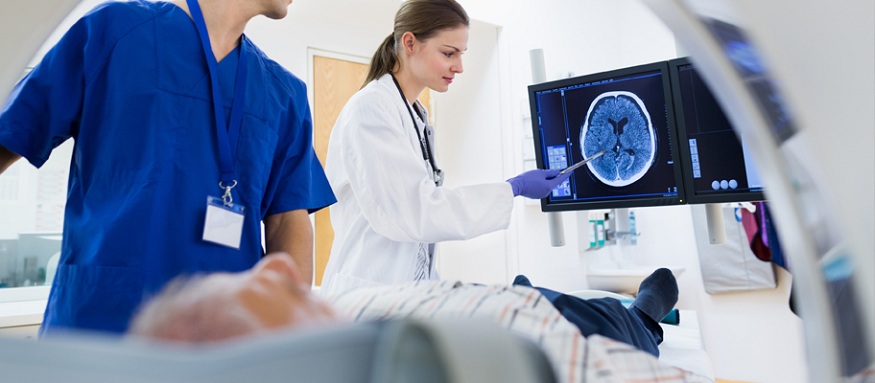Diagnostic imaging refers to non-invasive medical imaging techniques, such as x-rays, ultrasound, CT scans, and MRI scans, that provide visual depictions of the body’s interior. These technologies allow medical professionals to examine the internal structures, functions, and abnormalities of the body without surgery or exploratory procedures. The evolution of advanced diagnostic imaging represents one of the most influential developments impacting healthcare diagnostic imaging over the past century.
The Essential Role of Imaging in Modern Medicine
Perhaps more than any other medical specialty, diagnostic imaging in healthcare sits at the core of preventative care, early disease detection, therapeutic planning, and surgical interventions across nearly all branches of medicine. Imaging examinations inform everything from routine physicals to detecting and staging cancers to planning complicated neurosurgeries with precision mapping of delicate anatomical structures.
As a non-invasive process, imaging saves patients from trauma while quickly gathering critical diagnostic information through painless exams. The deep insights provided by routine imaging improve patient outcomes through earlier detection of diseases manifesting internally, often before outward symptoms arise. Simply put, providers could not practice quality medicine today without the invaluable insights provided by the best healthcare diagnostic imaging.
Leading Imaging Modalities Revolutionizing Healthcare
X-rays marked a major medical milestone when Wilhelm Röntgen discovered them in 1895, allowing visualization of bone fractures and pneumonia lesions previously hidden from plain sight. Healthcare advanced further with the advent of computerized tomography (CT) scans and magnetic resonance imaging (MRI) scans in the 1970s, which provide stunning three-dimensional views with unmatched anatomical detail using specialized equipment.
Ultrasound and nuclear imaging scans soon followed, offering real-time, safe imaging of developing fetuses and detailed views of metabolically active tissues. Each modality opened up new diagnostic capabilities, elevating the standard of care to new heights. Patients now benefit from an imaging toolbox packed with versatile, noninvasive tools that guide better health outcomes.
Greater Accuracy and Precision Driving Improved Diagnoses
The precision afforded by modern imaging removes much of the speculative nature historically surrounding medical diagnosis. Rather than making best guesses based on outward symptoms and imprecise manual exams, imaging scans provide concrete, high-resolution anatomical data from deep inside patients’ bodies.
This removes doubt and provides invaluable objective evidence for formulating diagnoses and treatment plans. Accurate early detection also allows earlier interventions, improving prognosis—especially critical for time-sensitive conditions like tumors or traumatic injuries. Overall, imaging’s pinpoint precision leads to better-informed, more judiciously executed healthcare.
Reduced Need for Exploratory Surgeries
Before advanced imaging, a correct diagnosis often required exploratory surgery to visually examine organs and tissues firsthand. Patients had to undergo anesthesia and recovery despite perfectly normal findings. Alternatively, some legitimate conditions went undiagnosed without surgeries, allowing diseases to silently progress.
With detailed CT scans, ultrasound visualization, and other imaging freight trains now readily available, the need for risky, expensive diagnostic surgeries evaporated overnight. Why operate when a painless scan can provide answers non-invasively? This massive reduction in superfluous surgeries translated to improved safety, outcomes, experiences, and cost savings for patients.
Enhanced Treatment Monitoring
In addition to diagnosing medical problems, imaging now plays an equally vital role in monitoring patient responses to applied treatments, whether surgical interventions, chemotherapy regimens, anti-inflammatory medications, or other therapeutics. Follow-up scans visually demonstrate shrinking tumor sizes, decreasing swelling and inflammation, healing bone fractures, or any visible measures of improving medical conditions under care.
This imaging feedback loop allows physicians to evaluate real evidence regarding their prescribed treatments’ effectiveness—or lack thereof. Imaging provides an impartial second opinion to clinical judgments, arming doctors with vital data to adjust approaches as needed per an individual patient’s response patterns.
Lowered Costs and Radiation Exposure
While advanced imaging equipment requires substantial upfront investment, the costs per patient decrease rapidly once installed. Short outpatient scans prove far cheaper than extended inpatient stays for exploratory surgery. Reduced misdiagnoses and rounds of ineffective treatments also curb costs. Additionally, improved technologies continuously lower radiation dosages, allowing wider screening without heightening exposure risks.
Guidance for Minimally Invasive Surgeries
Imaging now plays an integral role in guiding complex, minimally invasive surgeries. Detailed CT and MRI scans map pathways for surgeons navigating delicate neurovascular structures through tiny incisions using video assistance. Visual navigation combined with microinstruments expands possibilities while minimizing surgical risks and trauma. Pre-surgical virtual modeling also improves precision targeting and outcomes.
Earlier disease screening and prevention
Widely available, lower-risk CT scans and other imaging exams allow earlier mass screening for diseases like heart disease and cancer, detecting them in premalignant stages or before major organs sustain damage. By recognizing diseases sooner, medicine shifts focus toward proactive prevention and monitoring rather than reactive treatments. Early detection also vastly improves the prognosis for positive outcomes. This shift toward preventative population screening elevates community health standards.
Improved patient experiences and satisfaction
Patients appreciate the value of visual evidence over best guesses for serious medical conditions. Diagnostic certainty provides reassurance, while the noninvasive, pain-free aspects reduce anxieties over testing. Streamlined, precise care guided by imaging improves patient experiences through reductions in unnecessary medications, excess hospital visits, extended bedrest periods, and diminished overall guessing games. Good healthcare heavily weights positive patient experiences as an essential outcome.
Integration with Cutting-Edge Technologies
Looking ahead, imaging capabilities will expand even further through assimilating groundbreaking technologies like augmented reality, molecular imaging, spectroscopy scans, and fused imaging that combine multiple modalities. For example, new PET/MRI machines allow molecular activity recordings through radioactive tracers to be viewed alongside clear structural MRI scans for multifaceted analysis. Integrating more data-collecting methods into consolidated imaging powerhouses will propel medicine into uncharted future frontiers. Even in its current form, imaging has carved the pathway toward modern data-driven healthcare.
Conclusion
The advent of increasingly sophisticated, non-invasive diagnostic imaging tools now considered routine medical exams has expanded healthcare capabilities exponentially over the past century. CT scans, MRI scans, ultrasounds, and supplementary imaging modalities now serve as the eyes of healthcare providers examining the landscape within patients’ bodies to uncover hidden clues and information inaccessible otherwise.
This privileged visual access drives better outcomes through earlier detection, more accurate diagnoses, enhanced treatment monitoring, and a reduced need for exploratory surgeries. Medical imaging has crossed over from a specialty niche to a healthcare necessity, elevating standards across every medical specialty. Patients undoubtedly benefit the most from these best healthcare diagnostic imaging innovations that progress quality care forward every year.

